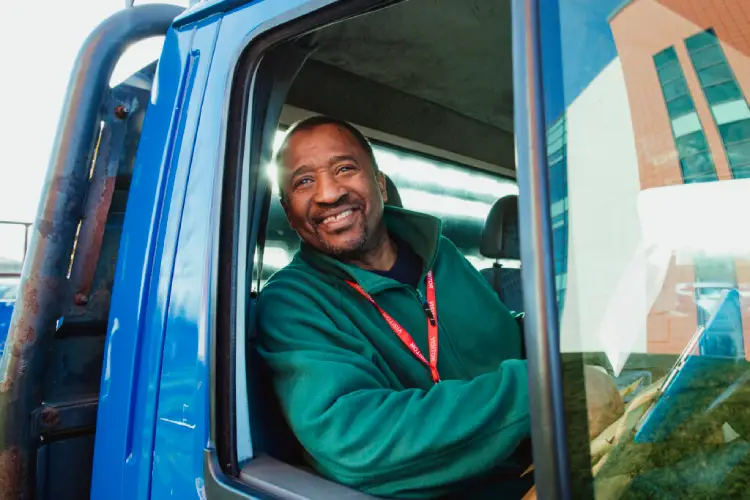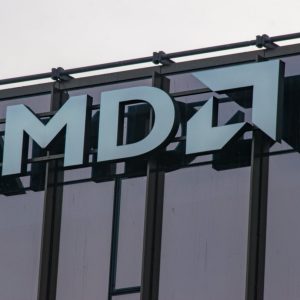
Autonomous vehicle start-up Wayve has signed a deal with Microsoft to use its supercomputer infrastructure to process the vast amount of information required to get driverless vehicles on the road, with the first use case set to be last mile grocery deliveries in London. Despite advances in driverless technology, experts say autonomous vehicle fleets remain a distant prospect for most businesses, though the required regulatory framework is evolving.

Wayve CEO, Alex Kendall told Tech Monitor the company has been hitting the boundaries of what is possible with commercial cloud computing offerings, even with the limited scale of data currently needed for the company’s trials. He said the deal with Microsoft, an investor in the company’s $200m funding round, announced earlier this year, will see new infrastructure developed drawing on super computers that will enable it to scale up.
“There have been extraordinary achievements in the past couple of years but any further advancements come down to the scale of computing data,” Kendall says, adding the deal with Microsoft will allow them to “push forward what is possible and create data using the bandwidth required to realise autonomous vehicles at a global fleet scale”.
Wayve applies an ‘end-to-end’ machine learning approach to its driverless vehicle technology, which could in theory allow it to go beyond prescribed and pre-mapped routes, taking to a new city based on learning elsewhere.
Deep learning models require supercomputer level processing
Dr Siddartha Khastgir, head of verification and validation for intelligent vehicles in the WMG group at Warwick University, says Wayve’s approach autonomous driving, using end-to-end machine learning rather than pre-defined routes, means plenty of extra processing power is required. Even using Microsoft’s supercomputing infrastructure, he predicts it could be up to seven years before it is commercially available.
“Wayve’s approach is very different to different organisations,” Dr Khastgir says. “They look at it as an end-to-end AI problems, which is very different to other driverless car solutions. To some extent the data processing limit is also true for the other approaches using non-end-to-end machine learning. I see pre-defined routes happening in the next five to seven years.”
Wayve says its learning approach enables the design of autonomous vehicle systems that will in the future be able to 'generalise', or operate in locations without any prior knowledge. “We built an adaptable autonomous driving system, training in London but then taken to Manchester, Liverpool and Leeds to show we can adapt to a new place," Kendall says. "But it is going to take collective experience and learning to improve that system.” He said this is where Microsoft’s supercomputer processing power comes into play.
This test is what attracted Asda and the Ocado Group to take part in a trial in London, that will see AI drive the vehicle but with a “safety driver” behind the wheel of the van as it makes the delivery rounds. This will provide real world information back into the Wayve system at fleet-scales, that can be fed into the Microsoft supercomputer and improve the abilities of the AI driver that could in future be used to allow vans to drive on any roads, in any city and in areas never seen by the system before.
Microsoft will be expanding its Azure cloud computing platform to allow access to super computers for Wayve, which will need to handle larger datasets consisting of high-definition images and videos, on top of compute-intensive workloads for training and validation. Models will be trained on trillions of parameters, exabyte-scale image data and all coming from a combination of real-world driving and simulations.
Barriers to autonomous vehicle fleets in the UK
One of the biggest challenges facing Wayve and other autonomous driving systems is safety, and particularly being able to prove the vehicle is safer than human driven cars, Dr Khastgir says. With human drivers there is currently one accident every 100,000km driven, but high-profile accidents have dogged companies around the world developing driverless vehicles. The most tragic case saw a cyclist in Arizona die after colliding with a self-driving vehicle from Uber in 2018.
“In the near term we are not going to expect a complete fleet of autonomous vehicles on UK roads," Dr Khastgir adds. "There will always be a mixture of human driven vehicles and autonomous vehicles together and the rules for one has to cover the other.
“As soon as you start saying the public has to change the way they drive it is a failure of technology. Normal people shouldn’t have to change the behaviour, the AI has to match it. We must codify the existing highway code to make sure autonomous vehicles match it.”
Dr Khastgir adds that “in the UK we are fortunate the government is taking a proactive approach on the legislation side. You need a regulatory model that is scalable across multiple use cases". A new framework for autonomous vehicles was announced during the Queen's Speech.
Wayve's Kendall told Tech Monitor that the push towards driverless fleets will also help to decarbonise the economy, as it is likely to be installed in electric vehicles rather than those powered by fossil fuels, saying: “We are confident over what we’re seeing in the world in terms of regulation and readiness for driverless vehicles. The case is clear and we’re seeing a lot of governments creating environment to push forward.”






